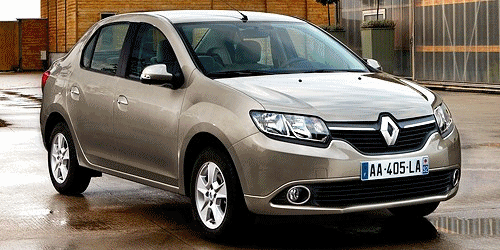 Emergent markets are really fond of sedan cars, specially between compact and medium sizes. Most of the current three-volumes of those categories come from countries like Brazil, China, Turkey and Iran even if the automakers need to build them from nothing more than their global platforms. Therefore, when Europe and US release a car only with hatchback and station wagon options, it doesn’t take long to those markets develop their own sedan variation. The car at this article is one of the best examples of this strategy ever seen.
Emergent markets are really fond of sedan cars, specially between compact and medium sizes. Most of the current three-volumes of those categories come from countries like Brazil, China, Turkey and Iran even if the automakers need to build them from nothing more than their global platforms. Therefore, when Europe and US release a car only with hatchback and station wagon options, it doesn’t take long to those markets develop their own sedan variation. The car at this article is one of the best examples of this strategy ever seen.
This is the third generation of the car originally named Renault Symbol, whose story became so confusing through the years that it’s worth to be explained step by step. This name originally came in 1999, with the first sedan adapted from Clio already following its second generation, which arrived in the previous year. Symbol was a Turkish version whose sales also started at that country, but it was easy to notice its concern with the cost reductions: sharing the hatchback’s parts until the rear doors did avoid producing too many extra pieces, but its design became unbalanced. That Clio had a wide third column to give a solidity impression, but the sedan demanded it to increase even more due to the connection with the bigger trunk volume, which in turn needed to deliver the biggest space it was possible. These were two strong reasons to draw a long third volume, but not to do it forgetting the style harmony. However, nothing of that stopped this car’s success specially among the families. Symbol was sold at other countries as Clio Sedan and face-lifted in 2002, but the half-decade witnessed some changes. The Romanian Dacia Logan soon became the Renault Group’s cheaper sedan worldwide, while the third European Clio became more sophisticated than the emergent markets could afford at its category, leaving this position to Sandero, Logan’s hatchback.
 Renault replaced the Clio family with much more modern entry-level cars, but it wasn’t Symbol’s end. Once again the Turkish department projected a three-volumes using that name, but now focusing at the next higher category to attract a more mature public. The prices were kept under a reasonable level because they also kept the older Clio’s platform, but with a different strategy: the design was completely new, sharing no body panels with the previous sedan in order to show much more elegant lines. The interior gave the appropriate answer with fluidic lines and great trim levels still with a big trunk, but not every country gave the best acceptance to this aging project, even with the interesting prices which in fact were the brand’s main intention. But the final situation was that Renault ended with both a low-budget and a “premium” sedan, as the emergent markets call cars like Symbol. The following changes received by these cars came with the second-generation Dacia Logan because of the contradiction highlighted by it: Renault’s cheaper sedan was already a younger project than the more expensive Symbol. But now the fourth Clio came again with no intentions of leaving Europe (and therefore not generating any “emergent sedans”) and Logan improved completely, but nothing was mentioned about Symbol… so far.
Renault replaced the Clio family with much more modern entry-level cars, but it wasn’t Symbol’s end. Once again the Turkish department projected a three-volumes using that name, but now focusing at the next higher category to attract a more mature public. The prices were kept under a reasonable level because they also kept the older Clio’s platform, but with a different strategy: the design was completely new, sharing no body panels with the previous sedan in order to show much more elegant lines. The interior gave the appropriate answer with fluidic lines and great trim levels still with a big trunk, but not every country gave the best acceptance to this aging project, even with the interesting prices which in fact were the brand’s main intention. But the final situation was that Renault ended with both a low-budget and a “premium” sedan, as the emergent markets call cars like Symbol. The following changes received by these cars came with the second-generation Dacia Logan because of the contradiction highlighted by it: Renault’s cheaper sedan was already a younger project than the more expensive Symbol. But now the fourth Clio came again with no intentions of leaving Europe (and therefore not generating any “emergent sedans”) and Logan improved completely, but nothing was mentioned about Symbol… so far.
The French automaker’s strategy deserves applauses for being a nice example of solving big problems with small acts. Logan and Sandero are expected to be sold under Renault’s badge outside Dacia’s markets due to the reasons listed at their own article in this blog, so their second generation was projected already considering that. So instead of having a new Symbol as one more car, they took the opportunity to replace it rebadging the new Logan. So the new Symbol will have the same advantages of its Romanian brother, also because the pictures here show the lack of deep changes: this project was intended to meet both brands’ style rules with nothing more than a front restyling: the front air intake resembles the new Clio or even Symbol’s fancy brother Fluence, while the rear received only the new badges. But the pictures also show that Renault will reveal the sedan’s interior in another opportunity. It’s expected that Symbol comes with better trim levels, including items such as digital air-conditioner and multimedia entertainment device with GPS. But these news will surely be confirmed at its first official presentation, scheduled to tomorrow at nothing less than… the Turkey Auto Show.
